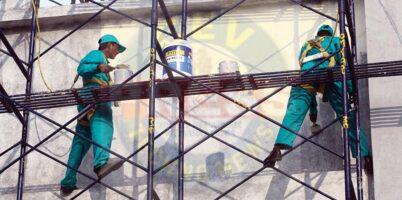MAINTENANCE AND REHABILITATION OF AGING STEEL STRUCTURES
Maintenance and Rehabilitation of Aging Steel Structures in India
Steel structures are a vital part of India’s infrastructure, used in everything from buildings and bridges to industrial plants and machinery. As these structures age, they require careful maintenance and rehabilitation to ensure their continued safety and functionality. This article explores the key aspects of maintaining and rehabilitating aging steel structures in India.
Understanding the Aging of Steel Structures
Factors Contributing to Aging
- Corrosion: Steel is susceptible to corrosion, especially in coastal and industrial areas with high humidity and pollution.
- Fatigue: Repeated loading and unloading cycles can cause fatigue in steel structures, leading to cracks and eventual failure.
- Environmental Conditions: Exposure to extreme weather conditions, such as high temperatures, heavy rainfall, and pollution, accelerates the aging process.
- Material Deterioration: Over time, the material properties of steel can degrade, affecting its strength and ductility.
Common Signs of Aging
- Rust and Corrosion: Visible signs of rust on the surface of steel components.
- Cracks and Deformation: Structural deformations and cracks, especially in load-bearing elements.
- Paint Deterioration: Flaking or peeling of protective coatings and paints.
- Joint Failures: Weakening or failure of welded or bolted joints.
Maintenance Strategies
Regular Inspections
- Visual Inspections: Conduct routine visual inspections to identify visible signs of wear and tear.
- Non-Destructive Testing (NDT): Utilize NDT techniques such as ultrasonic testing, radiography, and magnetic particle inspection to detect internal defects.
- Structural Health Monitoring (SHM): Implement SHM systems to continuously monitor the health of structures using sensors and data analysis.

Preventive Maintenance
- Surface Treatments: Apply protective coatings and paints to prevent corrosion and extend the lifespan of steel structures.
- Cathodic Protection: Use cathodic protection systems to reduce corrosion in buried or submerged steel components.
- Lubrication: Regularly lubricate moving parts and joints to prevent wear and reduce friction.
Repair and Strengthening
- Welding and Bolting: Repair cracks and damaged sections through welding or bolting techniques.
- Reinforcement: Strengthen weak or overloaded components using additional steel plates or braces.
- Grouting: Use grouting techniques to fill voids and strengthen foundations and supports.
Rehabilitation Techniques
Structural Retrofits
- Addition of New Members: Add new structural members to redistribute loads and improve overall stability.
- Section Enlargement: Enlarge existing sections by welding or bolting additional steel plates to increase load-carrying capacity.
- Composite Construction: Integrate steel with other materials, such as concrete, to enhance structural performance.
Advanced Technologies
- Fiber Reinforced Polymers (FRP): Use FRP materials to strengthen and repair steel structures without adding significant weight.
- Smart Materials: Implement smart materials that can respond to environmental changes and self-heal minor damages.
- 3D Printing: Utilize 3D printing technology to create custom components for repair and rehabilitation.
Case Studies in India
Bridges and Flyovers
- Howrah Bridge: Rehabilitation of the iconic Howrah Bridge in Kolkata involved extensive corrosion protection measures and structural strengthening.
- Mumbai’s Bandra-Worli Sea Link: Regular maintenance and monitoring have been crucial in ensuring the longevity and safety of this vital transportation link.
Industrial Structures
- Steel Plants: Continuous maintenance of steel plants, such as those in Jamshedpur and Bhilai, includes regular inspections and timely repairs to prevent catastrophic failures.
- Refineries and Power Plants: Maintenance of steel structures in refineries and power plants involves rigorous corrosion control and structural health monitoring.
Regulatory and Best Practices
Indian Standards and Codes
- IS 800: The Indian Standard Code of Practice for General Construction in Steel provides guidelines for the design and construction of steel structures.
- IS 456: This code provides guidelines for the use of concrete in combination with steel for composite structures.
- IS 2062: This standard specifies the requirements for steel for general structural purposes.
Best Practices
- Integrated Maintenance Plans: Develop and implement comprehensive maintenance plans that include regular inspections, preventive maintenance, and timely repairs.
- Training and Skill Development: Ensure that personnel involved in the maintenance and rehabilitation of steel structures are adequately trained and skilled.
- Use of Technology: Leverage advanced technologies, such as SHM systems and NDT techniques, to enhance the effectiveness of maintenance activities.
Maintaining and rehabilitating aging steel structures in India is essential to ensure the safety, reliability, and longevity of the country’s infrastructure. By adopting regular inspection and maintenance strategies, employing advanced rehabilitation techniques, and adhering to regulatory standards, India can effectively manage its aging steel structures and continue to support its rapid development.


